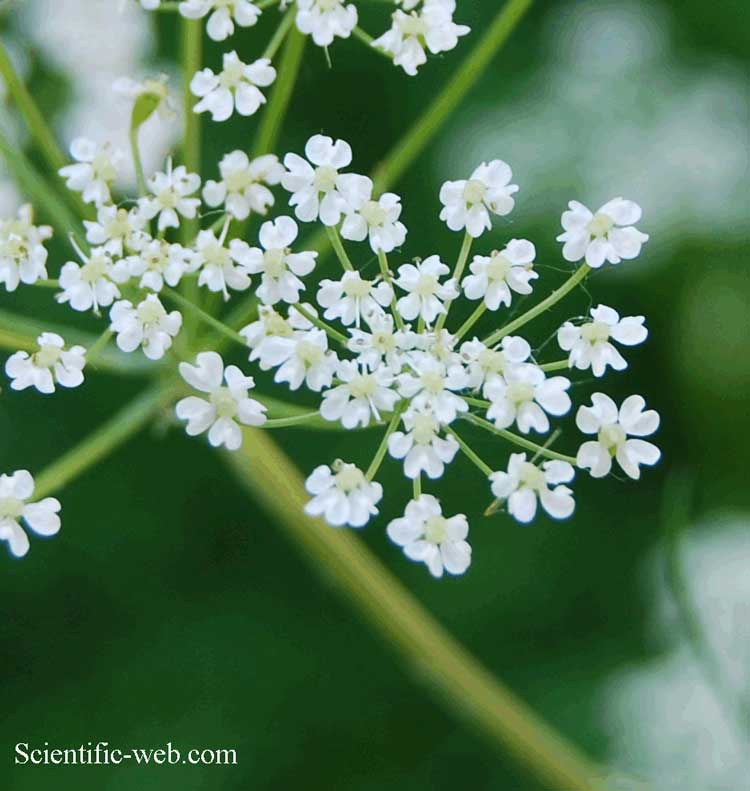Carum carvi, Photo: Michael Lahanas Cladus: Eukaryota Name Carum carvi L. Vernacular names ------------ Caraway (Carum carvi) also known as Meridian Fennel[1], or Persian Cumin, is a biennial plant in the family Apiaceae[2], native to western Asia, Europe and Northern Africa. The plant is similar in appearance to a carrot plant, with finely divided, feathery leaves with thread-like divisions, growing on 20–30 cm stems. The main flower stem is 40–60 cm tall, with small white or pink flowers in umbels. Caraway fruits (erroneously called seeds) are crescent-shaped achenes, around 2 mm long, with five pale ridges. The plant prefers warm, sunny locations and well-drained soil.
Caraway is also used in liquors, casseroles, curry and other foods. It is more commonly found in European cuisine. For example, it is commonly added to sauerkraut. [1][2][3][4][5] It is also used to add flavor to cheeses such as havarti. Akvavit and several liqueurs are made with caraway. In the United Kingdom it is (or was) commonly used in "seedy cake" (possibly originating in Cornwall) - similar to a Madeira cake but using the caraway seeds instead of lemon and orange. A carminative or a tea (tisane) made from the seeds is used as a remedy for colic, loss of appetite and digestive disorders and to dispel worms. Caraway seed oil is also used as a fragrance component in soaps, lotions, and perfumes. The roots may be cooked as a root vegetable like parsnips or carrots. Names and history The etymology of Caraway is complex and poorly understood. Caraway has been called by many names in different regions, with names deriving from the Latin cuminum (cumin), the Greek karon (again, cumin), which was adapted into latin as carum (now meaning caraway), and the Sanskrit karavi, sometimes translated as "caraway" but other times understood to mean "fennel." [3] The Italian finocchio meridionale (meridian fennel) suggests these shared roots, though cumino tedesco (German cumin) again points towards cumin -- though caraway also has its own name in Italian, caro . Other languages share similar peculiarities, with Yiddish borrowing the german Kümmel (cumin) as kimmel to mean Caraway, yet using the semitic term kamoon for cumin.[3] English usage of the term Caraway dates back to at least 1440 [4], and is considered by Skeat to be of Arabic origin, though Katzer believes the Arabic al-karawya (cf. Spanish alcaravea) to be derived from the Latin carum. [3] Similar herbs Caraway thyme has a strong caraway scent and is sometimes used as a substitute for real caraway in recipes. Other members of the family Apiaceae include anise, fennel, cumin, licorice-root (Ligusticum), and coriander.[2] In Hindi it is called Shah Jeera. In Gujarati it is called Shah Jeeru. Source: Wikispecies, Wikipedia: All text is available under the terms of the GNU Free Documentation License |
|

